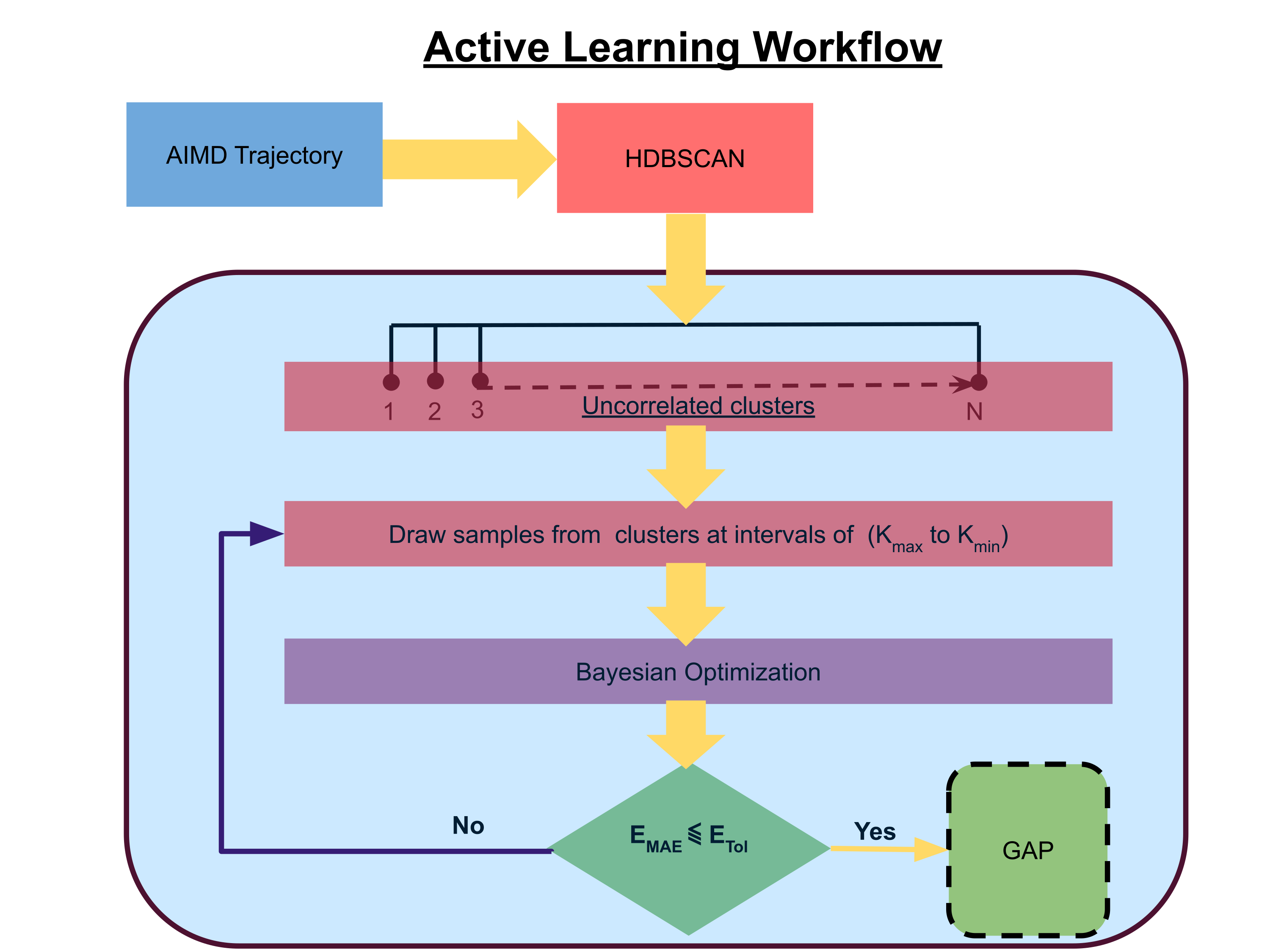Machine Learning Inter-Atomic Potentials Generation Driven by Active Learning: A Case Study for Amorphous and Liquid Hafnium dioxide
We propose a novel active learning scheme for automatically sampling a minimum number of uncorrelated configurations for fitting the Gaussian Approximation Potential (GAP). Our active learning scheme consists of an unsupervised machine learning (ML) scheme coupled to Bayesian optimization technique that evaluates the GAP model. We apply this scheme to a Hafnium dioxide (HfO2) dataset generated from a melt-quench ab initio molecular dynamics (AIMD) protocol. Our results show that the active learning scheme, with no prior knowledge of the dataset is able to extract a configuration that reaches the required energy fit tolerance. Further, molecular dynamics (MD) simulations performed using this active learned GAP model on 6144-atom systems of amorphous and liquid state elucidate the structural properties of HfO2 with near ab initio precision and quench rates (i.e. 1.0 K/ps) not accessible via AIMD. The melt and amorphous x-ray structural factors generated from our simulation are in good agreement with experiment. Additionally, the calculated diffusion constants are in good agreement with previous ab initio studies.
PDF Abstract
